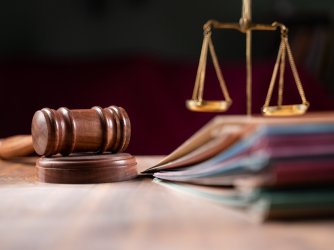Table of Contents
Supreme Court strikes down law prohibiting disparaging trademarks, affirms protection for offensive expression
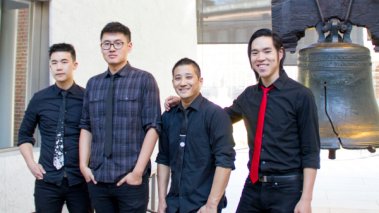
The Slants in front of the Liberty Bell.
In a highly anticipated ruling yesterday, the Supreme Court of the United States held in Matal v. Tam that the First Amendment prohibits the federal government from denying registration to “disparaging” trademarks.
Yesterday’s ruling is the culmination of a legal odyssey that started when Simon Tam and his band, The Slants, sought to register their name as a trademark. As The Slants told FIRE when they interviewed and performed at our Philadelphia office, and as reiterated by the Court, they chose this title to “‘reclaim’ the term and drain its denigrating force as a derogatory term for Asian persons.” Yet the United States Patent and Trademark Office denied their request under a section of the Lanham Act (which governs trademarks) prohibiting the registration of marks that “may disparage … persons, living or dead, institutions, beliefs, or national symbols.” After the dispute wound its way through several administrative appeals and lower federal courts, the Supreme Court agreed to decide whether this section of the Lanham Act violated the First Amendment’s Free Speech Clause.
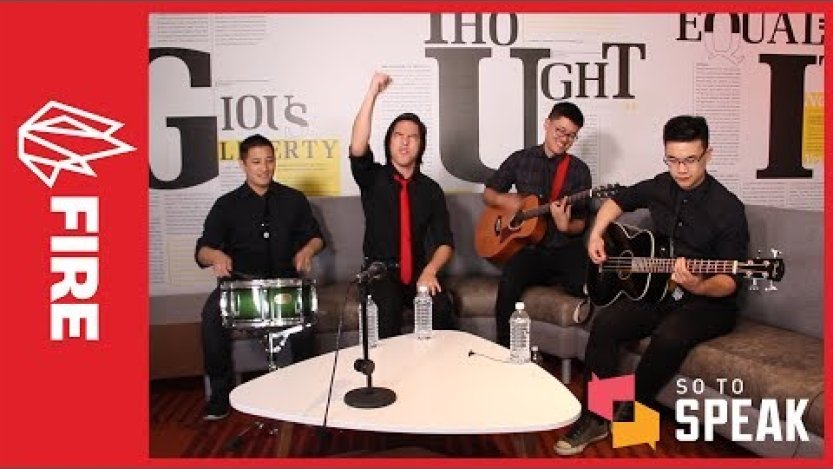
Although the decision had several concurring opinions featuring differing rationales, the justices unanimously agreed to strike down the so-called “disparagement clause” on First Amendment grounds. Much of the decision focused on whether trademarks are government speech; if they were, it would exempt the law from the First Amendment’s requirement of viewpoint neutrality, which applies only to speech by private actors. The government argued that trademarks, like license plates, are government speech, and therefore it can engage in otherwise impermissible viewpoint discrimination in registering marks.
The justices found this argument “far-fetched” and ultimately meritless. They reasoned that, if the government spoke via the trademark registration system, it would be “babbling prodigiously and incoherently.” If this were true, the Court rhetorically asks, “what does the Government have in mind when it advises Americans to ‘make.believe’ (Sony), ‘Think different’ (Apple), ‘Just do it’ (Nike), or ‘Have it your way’ (Burger King)?” (footnotes omitted). The justices also highlighted the danger of expanding the scope of government speech, “for if private speech could be passed off as government speech by simply affixing a government seal of approval, government could silence or muffle the expression of disfavored viewpoints.”
The Court’s decision also reaffirms a core principle of the First Amendment: The government cannot disfavor speech merely because the expression may offend others. In Justice Anthony Kennedy’s concurring opinion joined by three other justices, he explains how the “‘free trade in ideas’ and the ‘power of . . . thought to get itself accepted in the competition of the market’ . . . was a metaphor. In the realm of trademarks, the metaphorical marketplace of ideas becomes a tangible, powerful reality.” People often decide whether to buy goods and services based on trademarks, allowing them to support or disfavor expression using their dollars.
This tangible reality of competing ideas is embodied by the very nature of the dispute before the Court, where The Slants and the Patent and Trademark Office disagreed over the merit of using a racial slur as a band name. Justice Kennedy cites this “dissonance between the trademark’s potential to teach and the Government’s insistence on its own, opposite, and negative interpretation” to explain why offensive speech is protected under the First Amendment — in a free society, the government does not get to decide which words are too offensive for people to use, hear, and debate the meaning of.
Justice Kennedy adds that, even if the Court were to accept the government’s justification of preventing invidious discrimination, the law fails to accomplish this goal because it would disallow the registration of marks such as “‘Down with racists,’ ‘Down with sexists,’ ‘Down with homophobes’ . . . or ‘Slavery is an evil institution.’” This is “not an anti-discrimination clause; it is a happy-talk clause,” one that could “silence dissent and distort the marketplace of ideas.” A law banning disparaging speech would allow politicians to be “praised but not condemned” — stifling core political speech at the zenith of First Amendment protection.
On college campuses, censorship is often justified by pointing to the potential offensiveness of the expression. To the many public universities that still maintain speech codes prohibiting disparagement, consider the story of The Slants and the unmistakable words of Justice Samuel Alito:
But no matter how the [Government’s argument] . . . is phrased, its unmistakable thrust is this: The Government has an interest in preventing speech expressing ideas that offend. And, as we have explained, that idea strikes at the heart of the First Amendment. Speech that demeans on the basis of race, ethnicity, gender, religion, age, disability, or any other similar ground is hateful; but the proudest boast of our free speech jurisprudence is that we protect the freedom to express “the thought that we hate.”
This tremendous First Amendment victory yields two important lessons. First, fighting for free speech takes courage and conviction, for which The Slants earn FIRE’s utmost respect and gratitude. And second, when faced with demeaning, disparaging, or hateful expression, whether in the form of registered trademarks or public expression on a college campus, the answer is always more speech, not censorship.
Recent Articles
FIRE’s award-winning Newsdesk covers the free speech news you need to stay informed.
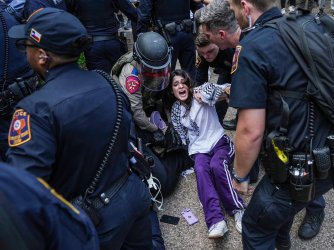
Texas tramples First Amendment rights with police crackdown of pro-Palestinian protests
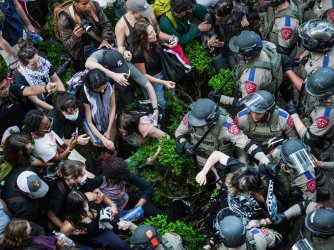
Here’s what students need to know about protesting on campus right now
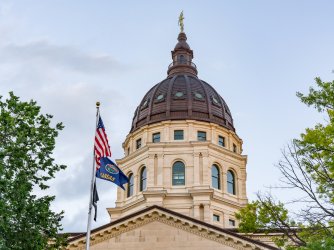
Kansas takes a stand for intellectual freedom
